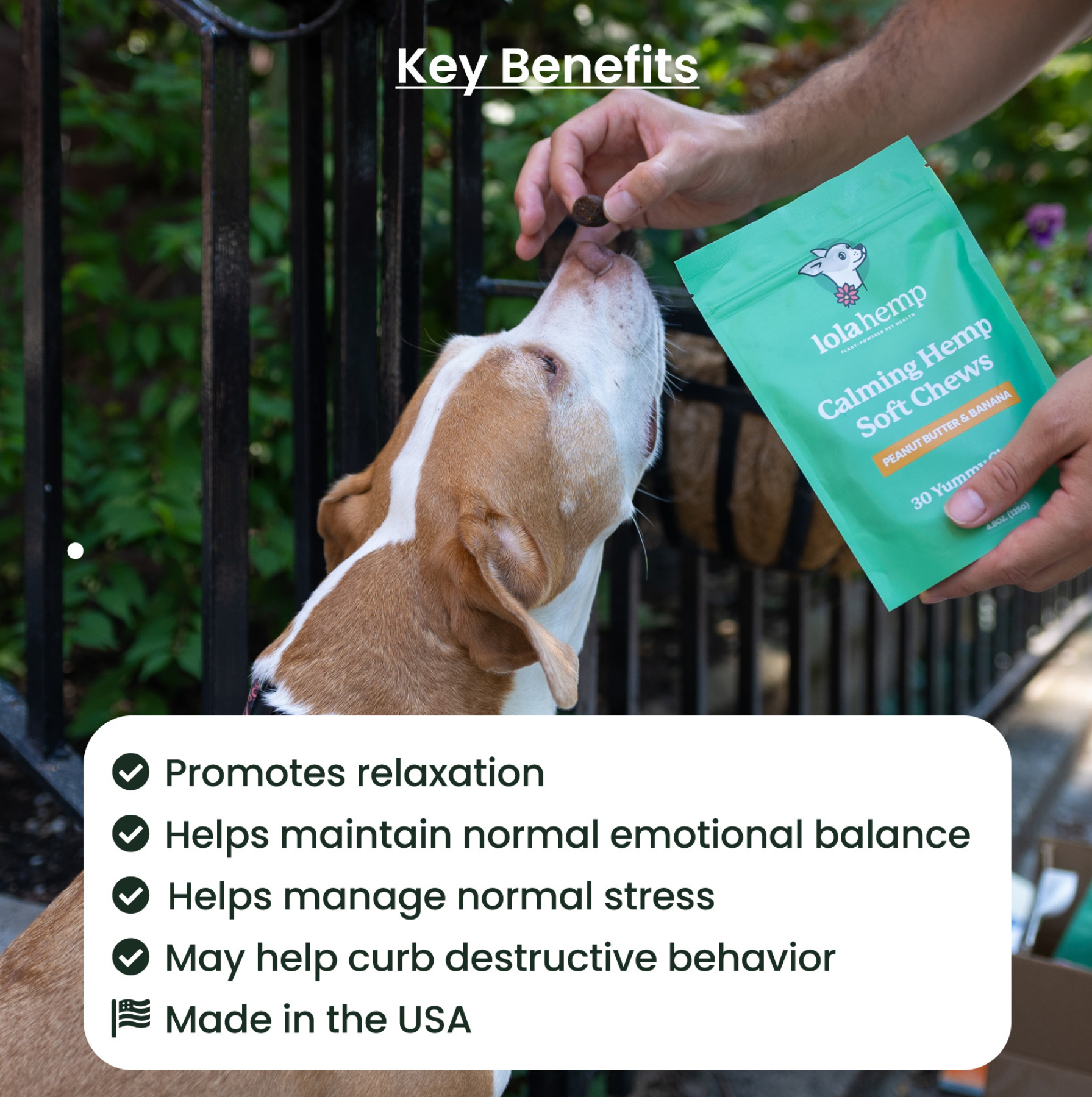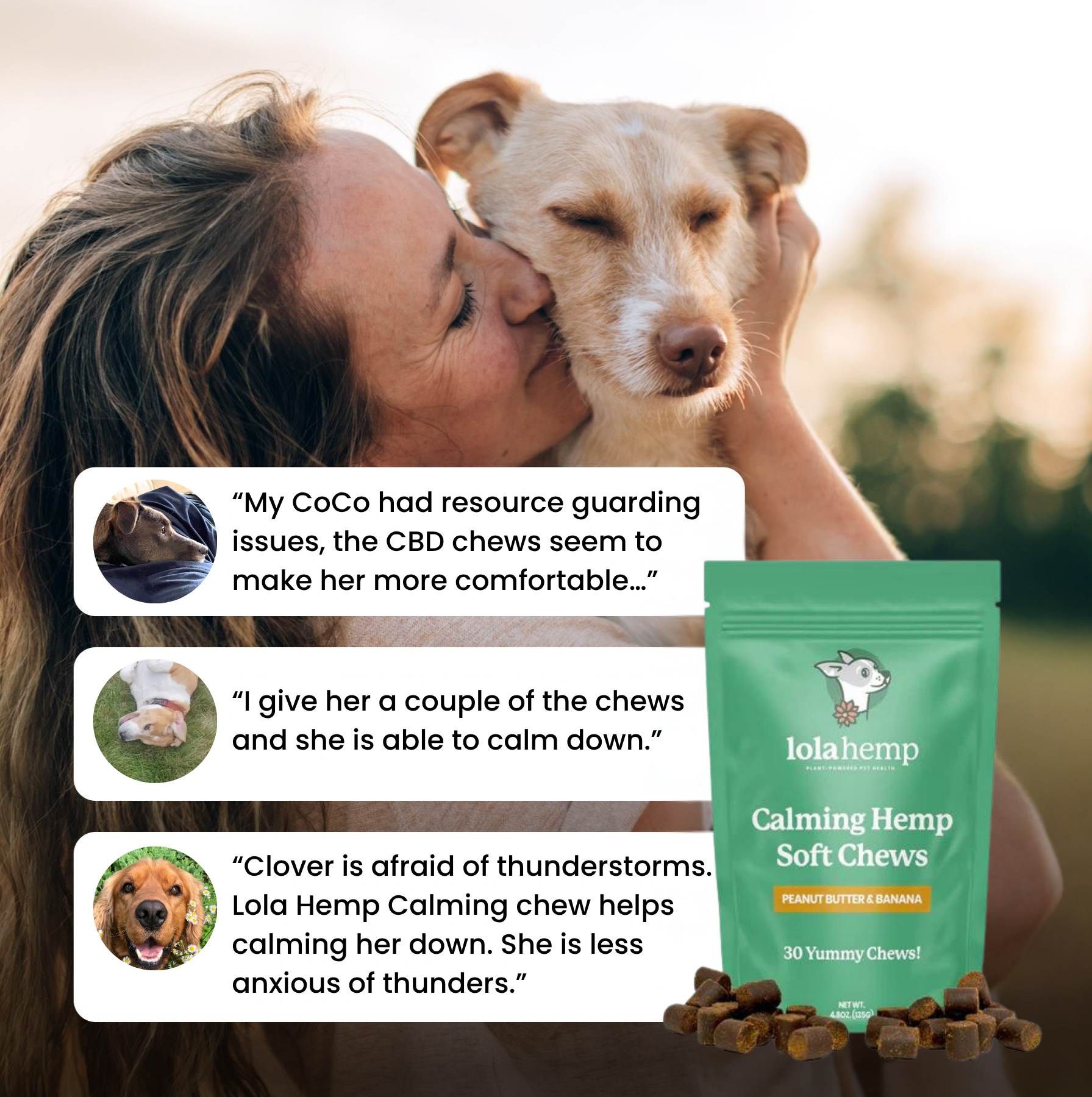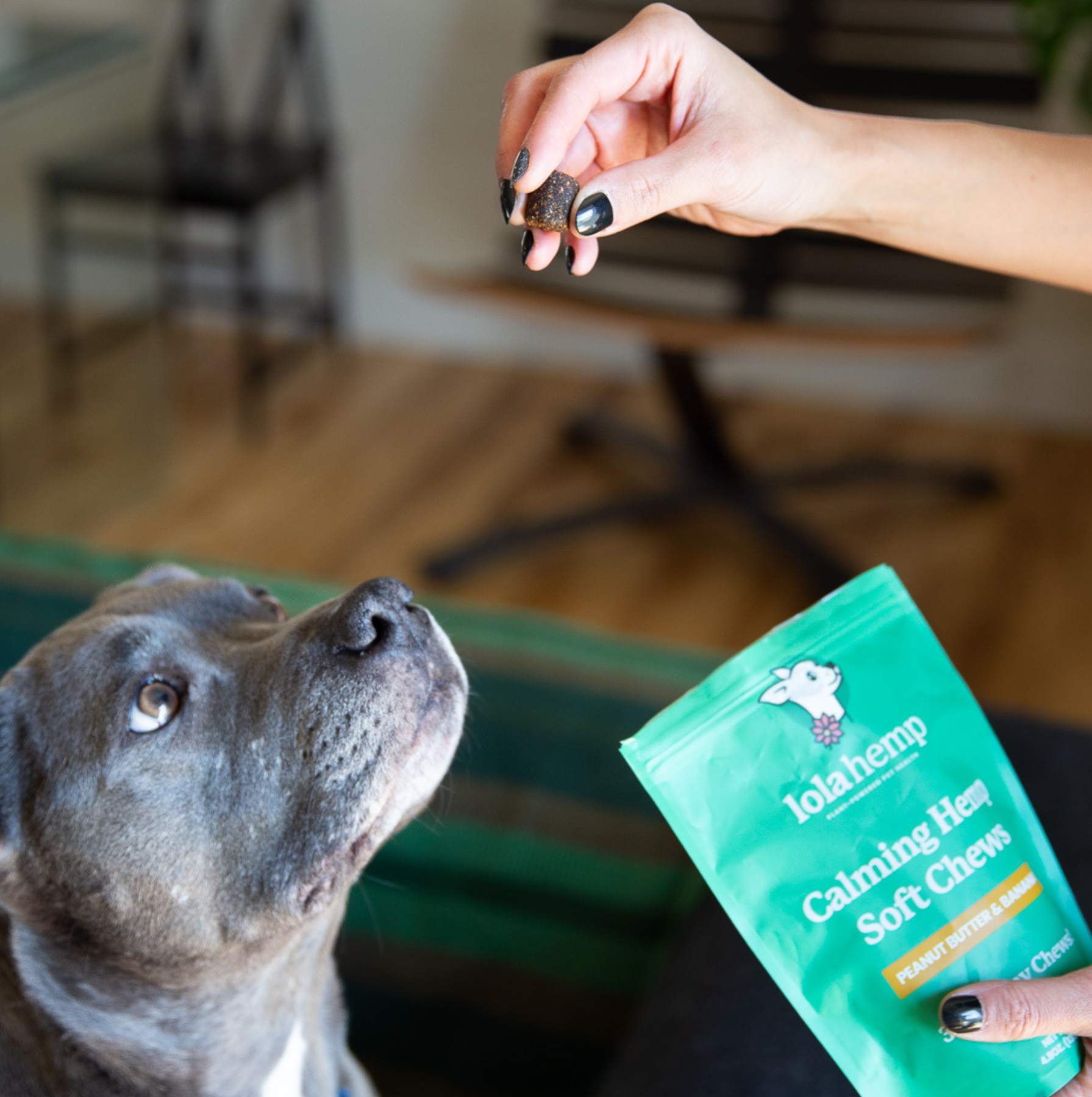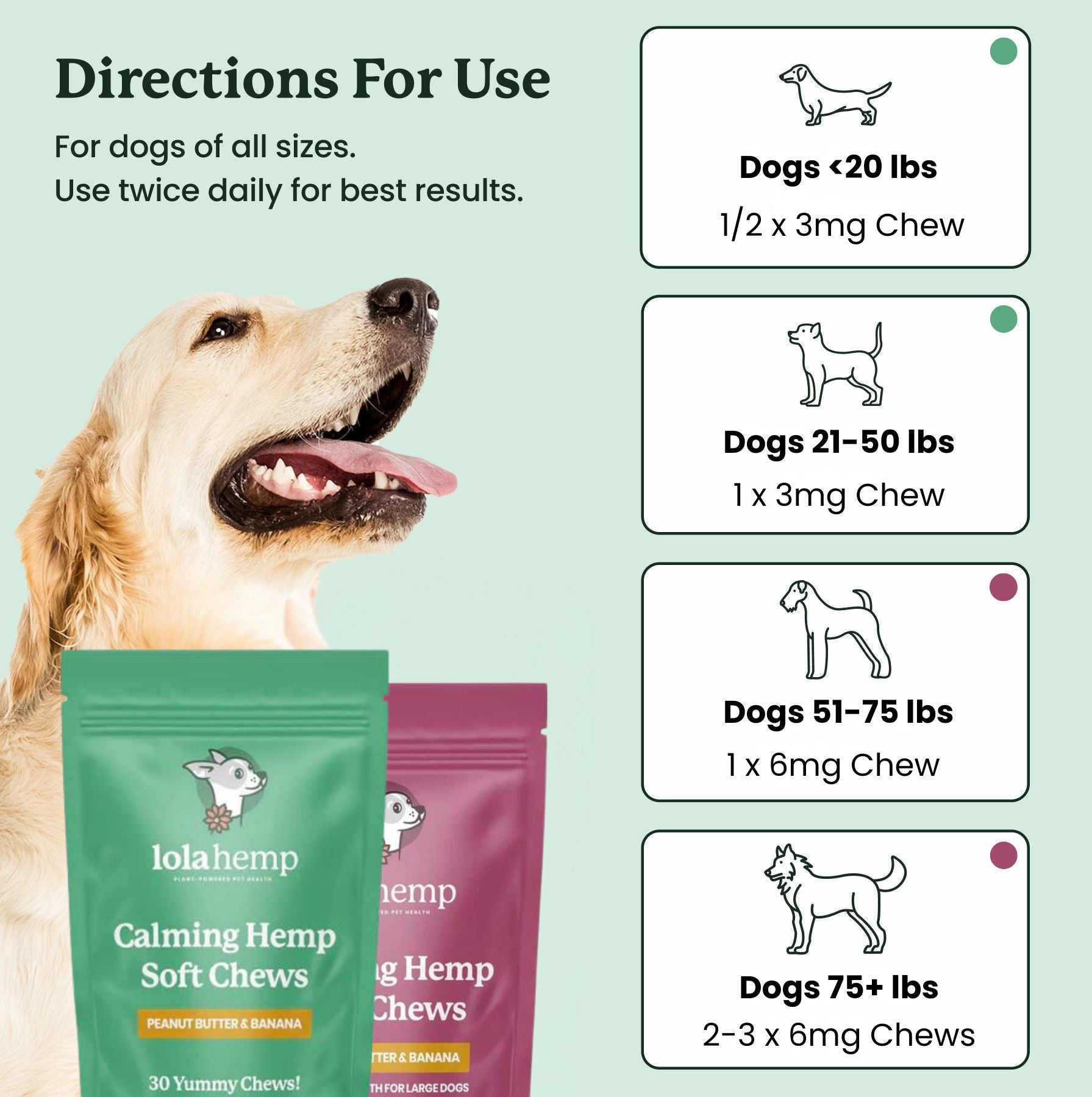One of the most critical “tricks” you can teach your dog is to come when called. Professional dog trainers call this skill recall.
Every dog should learn this behavior, and every dog owner should make teaching a strong recall a priority in training. Even puppies as young as 8 weeks old can start learning to come when called.
Being able to recall your dog may one day save their life. You may need it if they slip the leash, go running toward a busy intersection, or are heading for some other danger they are not aware of. This article will give you tried and true techniques to start training your dog to come when called, show how to continually reinforce this behavior, offer suggestions on calming supplements to help training anxious dogs, and discuss common mistakes to avoid.
- First Things First: Decide on a Recall Cue
- Choose The Right Reward, or "Marker"
- Start By Playing The Recall Game with Your Dog
-
" href="#img-src-https-cdn-shopify-com-s-files-1-0030-7435-9366-files-dep4-min_600x600-jpg-v-1609856382-alt-big-brown-dog-giving-their-owner-a-high-five-loading-lazy">

- Continue Recall Practice with Your Dog
- More Pro Tips for Training a Bulletproof Recall:
- Conclusion
- Dog Recall Training: Frequently Asked Questions
First Things First: Decide on a Recall Cue
The first thing to do when training your pooch to come when called is to decide on the cue that you want to use. A recall cue is the specific sound you use to make your dog come to you.
Choose a specific cue such as “Come!” or a specific sound such as a whistle or clapping sound. It is also okay to use their name, followed by the sound. Many trainers teach their canines to look at them when their name is called, followed by an “action cue.”

Choose The Right Reward, or "Marker"
A key component of training is linking the cue (sound) with a marker (reward) in your dog's brain. Using a marker allows you to let your dog know exactly when they are “doing it right” and will greatly accelerate any training.
There is a reason professional dog trainers use food rewards for most dog training, particularly in the early stages of training a new behavior. Most dogs are food motivated (except dogs that are allowed to free feed).
Food rewards can be repeated quickly in a training context and can be easily paired with a marker sound, making food an exceptional starting marker.
High-value food rewards are those special tasty treats your dog really loves: a small piece of cooked chicken, a tiny cube of cheese, a slice of a hot dog. Lower-value food rewards can be as simple as a piece of your dog’s daily kibble rations. Food rewards don’t have to translate into a fat dog!
Make a treat pouch for training that includes a mix of both high-value and low-value food rewards, using some of their daily food rations as the bulk of the pouch.

Start By Playing The Recall Game with Your Dog
When first introducing your dog to coming when called, it is advised to think of it as a fun game that is easy for your dog to win. Setting your dog up for success by making it easy for them to succeed is one of the little-known training secrets of dog trainers.
One way to play this game is to invite a few friends (and kids really love this game too) to sit in a circle and take turns using your recall cue, rewarding with praise and a food reward for success. Just ignore failure in this very early stage of this game.
Once your dog masters this game in the house in a very low distraction environment, try it outside in a fenced yard. Start close together in the recall circle and gradually increase the distance between the players as your dog gets more confident.
Continue Recall Practice with Your Dog
Once your dog has an understanding of your cue to "come", continue practicing this behavior with them in increasingly distracting environments. Your goal should be to have a command of your dog's recall wherever you are in the world.
That takes time, though. Plan to keep rewarding and practicing with your dog for years as they improve.
More Pro Tips for Training a Bulletproof Recall:
- Light Consequences: Only use your recall cue when you are prepared to enforce it by physically retrieving your dog if they fail to respond correctly. Failure should result in a brief time-out.
- Avoid Harsh Tones: Never call your dog and then punish them when they come. This will teach them that coming to you is unsafe.
- Don’t Overuse Cues: Repeating the cue teaches your dog that responding is optional. Say it once, then enforce.
- Try New Environments: Dogs do not generalize cues well. Practice recall in many different locations, using a long line until reliable.
- Accept Limitations: Some dogs have strong prey drive. Never rely on recall alone in dangerous situations.
- Retrain if Necessary: If your current cue has become “optional,” start fresh with a new cue.
- Consistency is Key: Practice recall at least several times a week. It is a lifelong skill.
Conclusion
Training your dog to come can be a challenge at first, but it's incredibly important. The skill of recall can truly save your dog's life if you ever find yourself in a difficult situation near cars, in the woods, or elsewhere.
If your dog is struggling to focus while training, consider giving them a calming treat to keep their minds sharp and free from distractions.
Dog Recall Training: Frequently Asked Questions
How do I start teaching my dog recall?
Begin indoors with minimal distractions, use a consistent cue, reward immediately, and keep sessions short and fun.
Why won’t my dog come when called outside?
Dogs struggle to generalize cues. New environments require fresh practice with rewards and long-line control.
How long does it take to train a reliable recall?
Most dogs need months of practice, with continued refresher training for life to keep recall sharp.
What rewards work best for dog recall training?
High-value rewards like chicken, cheese, or hot dog slices motivate dogs and strengthen recall response.
Should I punish my dog for not coming when called?
No. Punishment damages recall training. Instead, calmly retrieve your dog and use a brief time-out if needed.










